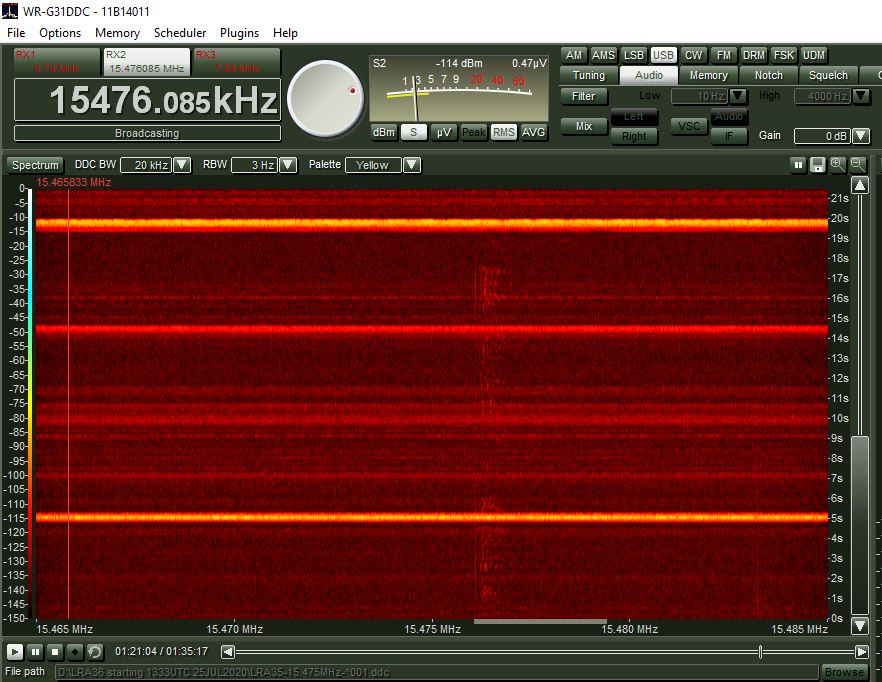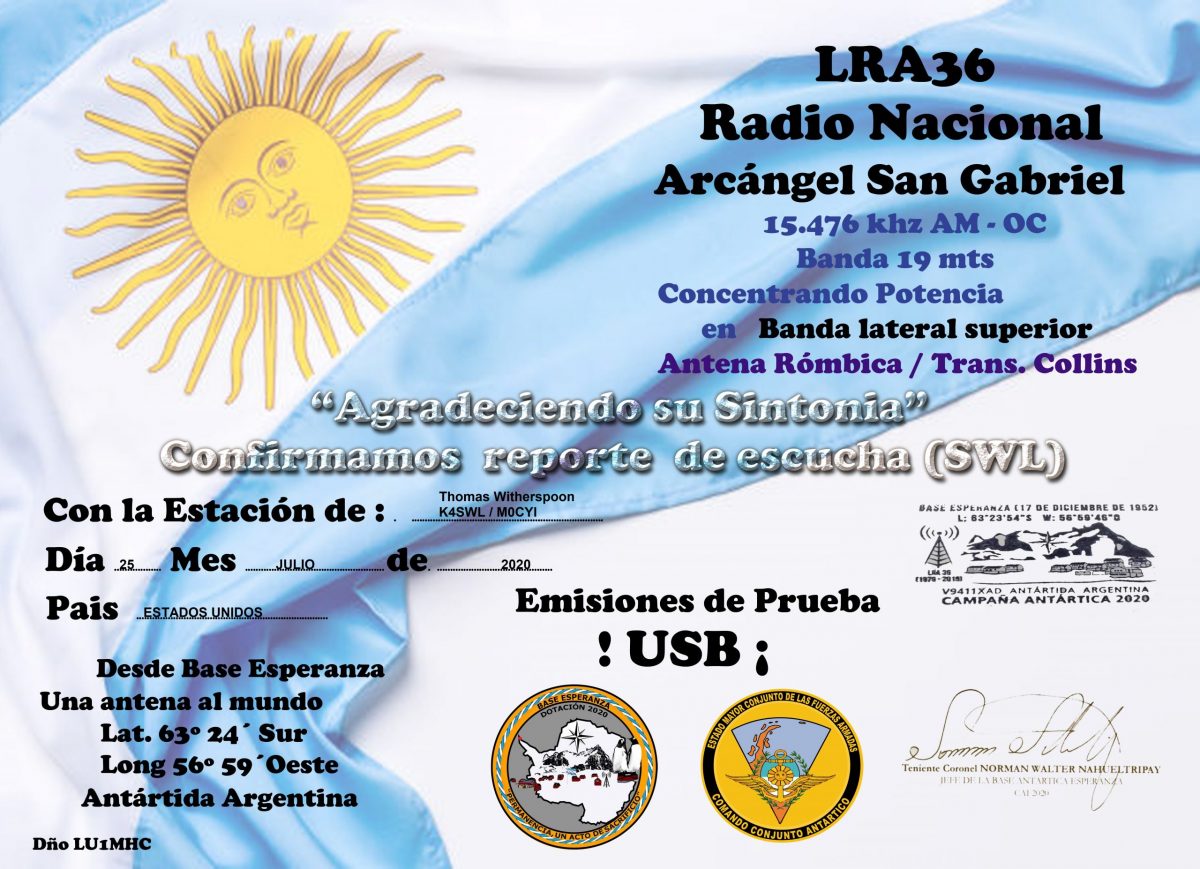For years now I’ve attempted to get decent reception of LRA36 Radio Nacional Arcángel San Gabriel in Antarctica. At times, I’ve been able to barely hear their AM signal here in North Carolina–at least, see it as a faint line on my spectrum display and barely hear audio rise above the noise. But in truth I could never confirm anything more than “male voice” and “music” thus never bothered with a report in good faith.
Recently, we’ve posted announcements for a series of test broadcasts from LRA36 in single sideband (SSB). Two weekends ago, I couldn’t receive a single inkling of their signal, but this past Saturday, I finally heard the station well enough to submit a detailed report and recording in confidence.
I had actually set my SDR to record 20 kHz of spectrum at home while I made my first CW POTA activation at the nearby Blue Ridge Parkway. A pop-up storm chased me away from the POTA site and it worried me that I had left my SDR running and connected to the antenna. Fortunately, none of the small thunder storms were directly over my home. Although there was heavy QRN due to local pop-up thunderstorms, their signal was there.
The following sample recording starts at 17:51 UTC (July 25, 2020) on 15476 kHz. It’s weak signal DX for sure, but interpretable. I made the recording with my WinRadio Excalibur SDR hooked up to a large Skyloop antenna. This clip starts with the song Juana Azurduy by Mercedes Sosa:
I’m so chuffed to add the LRA36 QSL to my collection! Broadcasting in SSB made all the difference!
Have you successfully logged LRA36 from your home? Please comment!


That’s a nice-looking interface. What radio and software are you using there?
I used my WinRadio Excalibur in this case. It’s a brilliant SDR in general, but what I really love is the fact that it can make very narrow spectrum recordings (down to 20 kHz). The Excalibur is still my staple SDR.
Congratulations! I tried for years to get some audio from LRA36 but never could. I got a carrier on mySDR several times but never heard anything. I listened to them via various remotes in Brazil the past few weekends so I don’t consider that actually copying them. I will again point out that they were broadcasting in their usual H3E mode during the recent tests. There was a very clear carrier on the Brazilian remotes. It looks to me like there is a carrier in your posted image too.
Regardless , I congratulate you on you dx’ing accomplishment.
Wonderful effort Thomas. Now, just as a challenge: how would most other SWLers rate the signal you recorded on the SINPO scale? I would rate it 14231. I’d be very interested to see how others rate the signal. This would be an interesting experiment, as we’re all able to listen to the exact same signal, and yet I’m sure many of us have quite diverging opinions about one and the same thing!
Ciao everyone…
here in Europe the reception, as always, was difficult, especially at home …
I was listening in my right place in Formia, central Italy, on the Tyrrhenian Sea and I was able to receive, even if with fading, the legendary LRA 36 …
you can see the result on my Youtube channel
QrpRadioListner at the link:
https://youtu.be/MQOqPsIdSH8
In other times with better propagation, in the evening, I managed to listen to it even with the only whip of my Tecsun pl 660 …
The place where you listen anyway makes the difference.
’73 to All.
Giuseppe Morlè iz0gzw.
Congratulations ! Another crossed out item on the bucket list.
Michael. N9YZM.
Chuffed…a phrase I haven’t heard in a long time…are you English?
Ha ha! No, just lived there.
Good one, indeed, and that from one who made antarctica using a short antenna, and a very cheap SDR, should hopefully mean something 🙂 keep on dxing !
Hear hear!